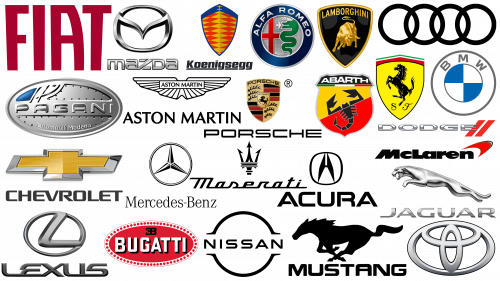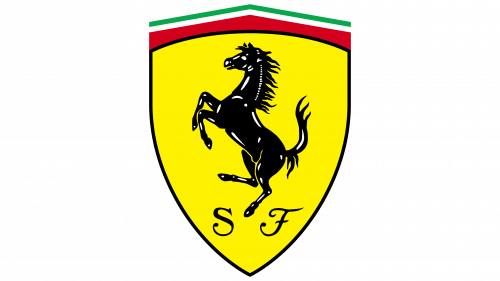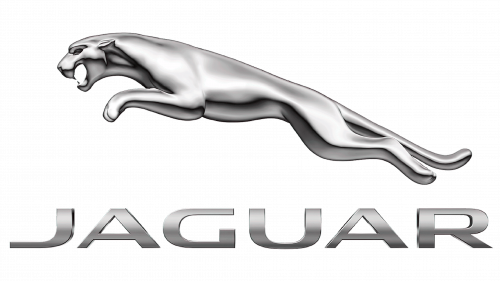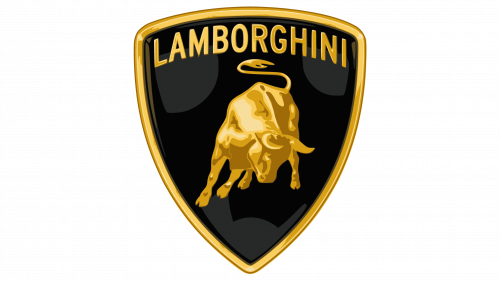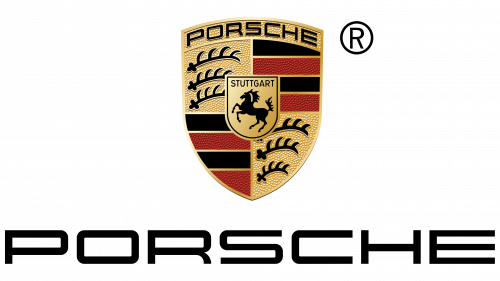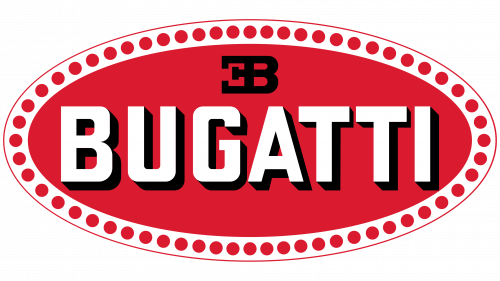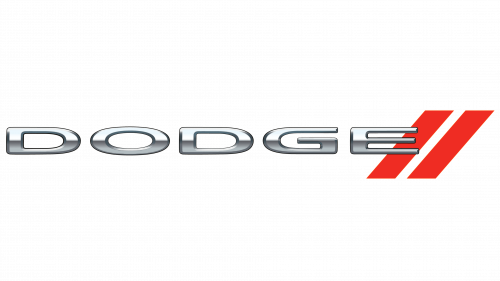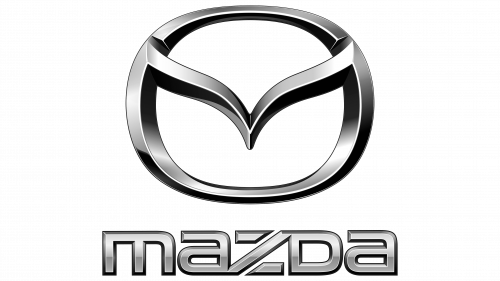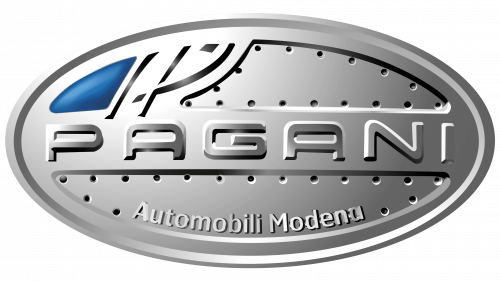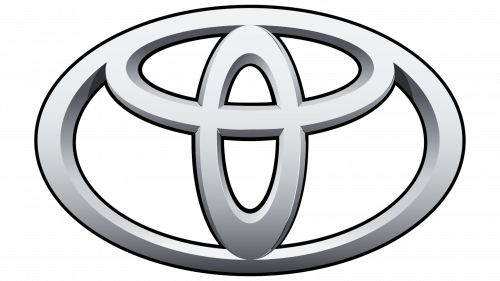In the world of sports cars, the logos that adorn these vehicles are not mere adornments but powerful symbols that embody decades of history, innovation, and unrivaled engineering prowess. These emblems are seamlessly woven into the very fabric of the brands they represent, evoking strong emotions and aspirations in enthusiasts and casual observers alike.
The Ferrari emblem, depicted on a yellow background, doesn’t just signify the brand; it embodies an entire legacy of racing heritage and automotive excellence. It evokes the roar of engines on the circuits of Monza or the winding roads of Maranello.
Lamborghini’s ferocious bull is a testament to the brand’s commitment to power and precision. It conjures up images of nimble machines racing through the streets of Sant’Agata Bolognese or conquering the most difficult terrains with ease.
The iconic Porsche crest with its horse, horns, and red and black stripes harkens back to the brand’s origins in Stuttgart, Germany. This emblem speaks to the luxury and fusion of tradition and innovation that the brand has consistently stood for.
These and many other sports car logos symbolize the passion and dedication with which each car is created. They signify meticulous attention to detail, a relentless pursuit of perfection, and an undying competitive spirit.
Diving into the world of sports car logos is akin to a thrilling journey through time. Here, you can see the evolution of design, shifting automotive trends, and the overarching concept that has brought these brands to the zenith of automotive excellence. Whether it’s the mystique of Maserati’s trident or the appeal of Aston Martin’s winged emblem, each emblem tells a story of ambition, dreams, and the relentless pursuit of pushing boundaries.
Famous sports car logos: Luxury sports car logos
In the dynamic world of the automotive industry, sports cars hold a special place, captivating many with their combination of speed, power, and elegance. These cars are not all created equal: they fall into different categories and serve different purposes, each with unique features and appeal.
Sports cars built for racing are engineering marvels designed to conquer the track. Aerodynamic profiles, lightweight materials, and high-performance engines make them beasts on the track, pushing the limits of speed and maneuverability.
There are sports cars designed for the open road, combining thrilling dynamics and practicality. These cars are more than just power; they promise to enhance the driving experience and make every trip unforgettable. Their design often combines aesthetics and functionality, providing optimal performance without compromising on looks.
Another addition is luxury sports cars that combine performance and luxury. These cars are the epitome of craftsmanship, offering adrenaline-pumping speed and a host of top-tier luxury features and amenities. From luxurious leather interiors to advanced infotainment systems, these cars are designed to satisfy the most discerning tastes.
Even higher up in the luxury echelon are the “supercars.” These cars are not just cars; they are masterpieces that represent the pinnacle of automotive engineering and design. These cars with staggering prices are often produced in limited editions and are the dream of many enthusiasts. Their emblems become symbols of exclusivity, prestige, and unrivaled performance.
Each carefully crafted emblem reflects the history, vision, and values of the brand. The emblems of famous luxury supercar manufacturers often tell a story of heritage, innovation, and milestones achieved over decades.
Standard luxury sports car logos can evoke a sense of elegance, sophistication, and timeless class. While both of these categories fall into the luxury segment, their logos subtly differentiate them by hinting at what you can expect behind the wheel. They are powerful symbols that embody the spirit, essence, and promise of the brands they represent, creating a bond between the car and its owner.
Acura
While not as easily recognizable as some iconic sports car emblems, the Acura emblem has firmly established its position as a leading manufacturer of performance vehicles on the global stage. Founded in 1986, the company began not as a stand-alone company but as a high-end offshoot of Honda – synonymous with Japanese automotive excellence.
The Acura logo – an arrow pointing upward – is not just aesthetically pleasing. It’s a visual story about the brand’s ethos. This upward trajectory not only alludes to the sky but also embodies the brand’s commitment to constant evolution, relentless research, and innovative ingenuity. The clear contours of the word mark in a strict font complement the emblem, reinforcing its impact. Together, they create a strong and assertive corporate identity, presenting Acura as a beacon of advanced technology combined with luxurious design. The intertwining of these elements – the arrow emblem and the distinctive font – represents not just a logo but the essence of Acura.
Alfa Romeo
Founded in the heart of Italy in 1910, Alfa Romeo is a testament to Italian craftsmanship and engineering in the automotive world. With its origins in Milan, a city renowned for design and innovation, the company has shown its passion over the years by creating striking cars that offer stunning performance. This dedication has seen the company take to the race tracks, from Grand Prix circuits to intense touring car racing championships, showcasing its engineering marvels.
While the cars speak of the brand’s commitment to excellence, the Alfa Romeo logo further emphasizes its rich heritage. The emblem, with its detailed and intricate design, fully captures the essence of Milan. Divided into two distinct parts, it combines the historical symbols of the city. On the left side, a cross, the emblem of the Municipality of Milan, is depicted. The right side, on the opposite side, depicts a dramatic scene – Visconti’s snake devouring a man. This image creates intrigue and is linked to the ancient house of Visconti, a famous Milanese dynasty.
The combination of these two symbols is a constant reminder of Alfa Romeo’s deep connection to its birthplace. Each car that rolls off the assembly line carries a piece of Milan’s history intertwined with modern automotive splendor.
Aston Martin
Aston Martin was born in the UK in 1913 and quickly carved out a niche for itself in the luxury sports car industry. More than a hundred years have passed, and today, the brand’s influence extends beyond the automotive world. It has made its way into mainstream culture and is referenced in iconic series such as the James Bond films.
Delving into the visual essence of Aston Martin, the symbol reveals layers of heritage and symbolic meanings. The presence of wide wings in the design pays homage to the brand’s early ties to the world of aviation. Wings have consistently symbolized speed, freedom, and progressive dynamism in the automotive domain. For Aston Martin, the winged design underscores their ongoing commitment to innovation and their promise to deliver an unrivaled motoring experience.
The color scheme of the emblem, which is an exquisite combination of silver and gray, brings additional nuance. These hues, which epitomize luxury, class, and timeless elegance, reflect the underlying ethos of Aston Martin. They emphasize the brand’s commitment to producing cars that are not just a means of transportation but an expression of style, combining British refinement and exceptional handling.
Ferrari
In the panorama of the automotive industry, few emblems command as much respect and admiration as the Ferrari emblem. The Ferrari emblem, synonymous with performance and luxury, is unmistakably recognizable throughout the world. The celebrity of this emblem is not limited to the automotive world: its influence has permeated various products, becoming a symbol of aspiration and elite craftsmanship.
Originating from Italy, home to many legendary cars, Ferrari traces its history back to 1939. Being at the forefront of innovation and design, this legendary brand has managed to pay homage to its roots through subtle yet meaningful elements in its logo. One such element incorporates the colors of the Italian flag, signifying a rich heritage and pride in its origins.
The centerpiece of the emblem is a majestic galloping horse. This equine figure is more than just a design; it carries a deep symbolism. Embodying speed and agility, it captures the essence of what Ferrari represents in sports cars. In addition, the horse is a good luck charm, signifying the brand’s unwavering commitment to excellence and unwavering pursuit of it. The elegance and grace of this figure fit seamlessly into the brand’s image, resonating with fans and casual observers alike.
Jaguar
Founded in 1933, Jaguar has established a reputation as a leading luxury and sports car brand, recognized worldwide for its unrivaled elegance and performance. This renowned car manufacturer, now operating under the Land Rover umbrella, offers a diverse range of models aimed at different market segments. That said, the luxury segment remains its strong point.
The Jaguar logo is as distinctive as the cars it represents. The emblem captures the essence of the Jaguar – the animal, not just the brand – in a dynamic pose, depicted in a bright silver silhouette. The emblem depicts a jaguar frozen in place and ready to gracefully leap over the brand name, typed in bold sans-serif capital letters. The choice of the jaguar, a symbol of strength, agility, and grace, echoes the main characteristics of the brand’s cars.
The harmonious combination of the jaguar image with the brand name beneath it is not just aesthetically pleasing. It is a powerful visual embodiment of Jaguar’s commitment to creating cars that are not just a means of transportation but the epitome of luxury, power, and sheer driving pleasure.
Lamborghini
The Lamborghini emblem commands respect and admiration among the echelons of luxury car emblems. Since 1963, this brand, which appeared on the streets of Sant’Agata Bolognese, has firmly established itself in the niche of high-performance luxury sports cars. Its global presence, despite being comparatively younger than some of its peers, is legendary.
At the center of the Lamborghini emblem is a majestic golden bull encased in an austere black shield. This image is not just a decoration; it embodies the basic principles of the brand. The bull, embodying brute strength and formidable power, is a fitting embodiment of the explosive energy for which Lamborghini cars are famous.
The founder of the company, Ferruccio Lamborghini, was fascinated by the ferocious yet graceful behavior of bulls during the Spanish bullfight. This spectacle made a lasting impression on him, and as a result, the bull became the central motif in the company’s branding.
The emblem doesn’t just emphasize the founder’s personal experience; it constantly reminds him of the brand’s ethics. Every glance at the Lamborghini shield confirms his commitment to creating cars that are not just means of transportation but masterpieces of engineering and art.
Lexus
Since its inception in 1989, Lexus, the luxury car division of renowned Japanese automaker Toyota, has made significant strides in the global automotive market. The brand is not only well-known in Japan but is also successfully expanding its presence in more than 90 countries around the world. The brand’s growing popularity is not surprising, as it is Japan’s leading distributor of premium cars.
Emerging as a result of Toyota’s desire to enter the luxury and high-performance car segment, Lexus has been carefully crafted to redefine the concept of luxury. This strategic move allowed Toyota to diversify its offerings and cater to a more upscale segment of the market, thus expanding its consumer base.
In terms of branding, Lexus chooses elegance in simplicity. Its emblem is understated yet impactful. At the heart of this branding is a silver wordmark that elegantly reads “Lexus.” Above it is a symbol that reflects the essence of the brand. This emblem, which is a silver circle with the clear shape of the letter “L,” has many interpretations. Some see it as an arrow, symbolizing forward movement and innovation; others perceive it as a bend in the road, symbolizing the endless journeys and adventures in which Lexus cars participate.
Maserati
Founded in 1914, Maserati has since carved a niche for itself in the pantheon of legendary sports car manufacturers. For decades, this Italian beacon of luxury automotive excellence has set the benchmark for style, performance, and elegance. Synonymous with excellence, Maserati is not just a brand but a testament to the innovation and passion that defines Italian engineering.
If you delve into the Maserati emblem, you’ll find many historical and semantic layers. At its core is a graceful word mark with serifs that emanate an aura of timelessness and luxury. This typographic choice serves not only to represent the brand’s name but also to embody its long-standing heritage and commitment to sophistication.
The true symbolic soul of Maserati is its inimitable trident with three prongs. More than just a visual element, the trident connects the brand to a deeper historical context. Drawing inspiration from the revered statue of Neptune in Bologna, this iconic symbol doesn’t just reference the childhood memories of the company’s founder. The Trident is a metaphor for the brand’s unwavering commitment to overcoming challenges, harnessing the energy, and unrivaled leadership.
McLaren
Launched in 1963, McLaren quickly became a vibrant presence in the high-octane world of Formula 1 sports cars. This famous company, created by racing maestro Bruce McLaren, was not just another player in the automotive industry. It was a brand destined for global recognition and fierce competition. In 1968, just five years after its creation, the McLaren racing team scored its first Grand Prix victory.
The McLaren emblem is a window into the brand’s ethos and heritage. Although, at first glance, its design may appear minimalist, it is filled with symbolism. The centerpiece of the emblem is an unmistakable word mark in bold sans-serif font, indicating the assertiveness and clarity of the brand’s mission. Just above is an intriguing orange semicircle. While it resembles the rising sun or the setting horizon, a closer look reveals an abstract arrow shape. This arrow pointing upward and to the right is not just a design element. The choice of orange, in addition to being an important part of the brand’s racing livery, emphasizes McLaren’s vigor, energy, and passion in all endeavors.
Mercedes Benz
Originating from the heart of Germany in 1926, Mercedes Benz has carved a prominent niche in the automotive industry. The brand is known not only for its luxury sedans and commercial vehicles but also for its sports cars, showcasing its versatile automotive prowess. Over the decades, Mercedes Benz has expanded its range, producing a variety of vehicles to suit a wide range of tastes and requirements.
One of the most distinctive features of Mercedes Benz is its iconic emblem in the form of a three-pointed star. This emblem is very significant and has a rich history. Rooted in the brand’s heritage, the three-pointed star is associated with the Daimler family. It is believed that the inspiration for this emblem came from the emblem that Daimler’s sons remember their father using in his correspondence.
This symbol is not just an indication of the brand’s pedigree. The three points of the star symbolize the vision and ambition of Mercedes Benz. It is a testament to the brand’s unwavering commitment to being a pioneer and leader in these areas through its innovative vehicles. The three-pointed star shining on the grille of every Mercedes Benz vehicle silently tells the story of a century of dreams, dedication, and unrivaled automotive excellence.
Porsche
Since its foundation in 1931, Porsche has built a reputation as a formidable player in the high-performance car sector. Originating in Germany, the brand has expanded its horizons, gaining international recognition for its combination of precision mechanics, innovative design, and driving excellence. In addition to its iconic sports cars, Porsche has demonstrated its ability to adapt by entering the SUV and sedan market, finding a harmonious balance between power and everyday practicality.
A deeper examination of Porsche’s symbolic mark reveals a rich mosaic of historical connections and thoughtful design decisions. The intricate logo, which resembles a centuries-old coat of arms, contains multi-layered narratives. Two emblematic coats of arms are gracefully intertwined in this symbolic shield. The first is a reference to the region of Württemberg, reaffirming the brand’s German heritage. The second is a tribute to Stuttgart, Porsche’s founder, and the metropolis where automotive innovation was born.
At the heart of the emblem is an elegantly depicted horse in mid-gallop. It is not just a piece of jewelry. It embodies the philosophy of the Porsche brand, symbolizing refinement, craftsmanship, and strength. The image of the horse, captured in its powerful gait, represents Porsche’s unwavering commitment to setting industry standards, emphasizing the inherent vigor and passion of each car. The Porsche symbol is more than just a decorative element. It acts as a portal to the brand’s historic past.
Other famous sports car logos
While the automotive world often focuses on the very best luxury cars, it is important to expand horizons and recognize the diversity of the market. Some manufacturers traditionally associated with budget and practical cars are steadily entering the sports model market.
These manufacturers, renowned for producing economical and utilitarian models, are demonstrating a versatile approach by entering the sports car segment. This strategic move is aimed at broadening the consumer base and disproving the common belief that thrilling driving experiences are reserved for expensive brands.
The entry of these traditionally low-cost manufacturers into the sports car segment represents more than just a diversification of their lineup. It demonstrates their commitment to engineering excellence and proves that they can produce cars that combine performance and affordability. It epitomizes the principle that fun on the road doesn’t always have to come with a high price tag.
These performance-oriented models from top brands often utilize the latest in automotive technology. From turbocharged engines to advanced suspension systems and state-of-the-art connectivity, these vehicles are a testament to the brand’s commitment to innovation and modernization. They bridge the gap by combining the everyday reliability of conventional cars with the dynamics inherent in luxury sports cars.
Abarth
Hailing from Italy, renowned for its automotive masterpieces, Abarth stands out among other racing and road car brands. Founded in 1949 by visionary Carlo Abarth, the brand eventually became a subsidiary of the larger Stellantis conglomerate. With a presence in various regions of the world, Abarth has carved out a niche as a leading manufacturer of sports cars, with designs often inspired by Italian auto giant Fiat.
For decades, the Abarth lineup has demonstrated versatility, presenting a variety of styles to suit a wide range of tastes. The company’s commitment to performance and Italian craftsmanship remains unchanged.
The Abarth logo may not be as globally recognizable as some of its sports car contemporaries, but it evokes a sense of admiration among enthusiasts. At the center of the logo is a scorpion placed in a bright yellow and red shield. This is not just a design choice but an indication of Carl Alberto Abarth’s astrological sign, Scorpio. The symbolic presence of the scorpion represents Abarth’s fierce determination, agility, and predatory nature on the race track. The color palette of the shield, filled with warmth and passion, pays homage to the Italian roots of the brand and reflects the nation’s commitment to automotive excellence.
Audi
At the dawn of the 20th century, in 1909, Audi established itself in the automotive industry. Over time, the brand underwent a series of changes that eventually led to its incorporation into the formidable Auto Union. This merger not only strengthened Audi’s position but also brought together the expertise and heritage of four elite automotive pioneers.
The Audi car catalog, covering various segments, is extremely extensive. Reliable and practical models satisfy the everyday needs of drivers, while the high-octane models of the S and RS series satisfy racing enthusiasts. Keeping pace with modern technological advances and the pursuit of environmental sustainability, the brand has also embraced the world of electric vehicles.
The emblematic four interlocking rings, which can be seen on every Audi car, serve not only as a design symbol. They tell the story of the legendary Auto Union merger, representing the unity of Horch, Wanderer, DKW, and Audi. This emblem goes beyond superficial aesthetics, it emphasizes the shared mission and collaborative ethic that the founding companies embodied.
The trajectory of Audi, from its early days to today’s pioneering steps, embodies more than just automotive excellence. These emblematic rings, gracefully adorning each vehicle, echo the legacy of collaboration and innovation that Audi so advocates.
BMW
Founded in 1916, the renowned German automobile brand BMW boasts a heritage of more than a century. With a commitment to excellence and innovation, this illustrious manufacturer has expanded its range to include a variety of vehicles. From luxury touring and high-performance sports cars to practical everyday vehicles, the cars offered by the brand cater to a variety of customers.
BMW’s craftsmanship is not just confined to the production lines. The brand demonstrates its skills on the racetrack, participating in various racing tournaments and leaving an indelible mark on the motorsport scene.
The design is inspired by the flag of Bavaria. To circumvent possible trademark issues, the brand cleverly reversed the colors of the flag. This clever modification ensures brand recognition while paying homage to the brand’s regional roots.
The central motif of the logo has an aviation theme. It resembles a spinning airplane propeller, signifying BMW’s historic entry into the aviation industry. BMW is a beacon in the automotive industry whose uniqueness echoes its deep history. Intertwined with each other, the emblem remains a symbol of the brand’s roots, aspirations, and drive to push the boundaries.
Bugatti
Founded in 1909, Bugatti is a testament to a rich history of automotive excellence. Despite ceasing production in 1963, the brand has maintained its legacy of making its cars some of the most desirable sports cars in history. For more than half a century, these cars were renowned not only for their unrivaled design and performance but also for dominating the race track and winning victories in various global competitions.
A close look at the Bugatti logo gives a glimpse into the historical past of the brand. The presence of red dots on the logo evokes various interpretations. According to one of the dots, they imitate safety ropes – an integral element of racing and sports cars of the past eras, symbolizing the racing pedigree of the brand.
Another interpretation leans more toward the artistic vision of Bugatti founder Ettore Bugatti. He often equated his automotive creations with gemstones, suggesting that the red dots could represent rubies. This interpretation not only indicates the luxury and exclusivity of Bugatti cars but also emphasizes Ettore Bugatti’s perception of his cars as masterpieces akin to fine jewelry. The emblem is a constant reminder of the brand’s outstanding heritage and its contribution to the world of high-performance cars.
Chevrolet
Chevrolet, a recognized name in the automotive industry, has an extensive lineup that includes SUVs, trucks, and traditional sedans. It’s worth noting that Chevrolet’s portfolio also includes performance-oriented vehicles such as the Chevrolet Corvette.
Founded in November 1911, Chevrolet has cemented its reputation as one of the leading automotive brands globally, especially in the United States, where it is often among the top-selling automakers.
A distinctive feature of Chevrolet is the emblem – a gold-colored butterfly. The genesis of this emblem is still a matter of debate. According to some versions, it appeared under the influence of the pattern on the wallpaper. Others, on the contrary, argue that it emerged from the imagination of the founder of the company and became a completely original creation. Regardless of the origin of the emblem, it has become synonymous with Chevrolet’s reputation as a manufacturer of quality and efficient cars.
Dodge
Founded in 1900, Dodge has carved out a prestigious niche in the American automobile industry and is headquartered in Michigan. While the brand is widely recognized for its high-performance models, it demonstrates a breadth of expertise beyond that. Among a variety of vehicles, enthusiasts often highlight models such as the Dodge Viper, the epitome of perfection on the race track.
Dodge’s footprint is undeniable if one delves into the annals of American automotive achievement. It has cemented its place as one of the iconic brands that resonate with car fans and the general public.
The distinctive emblem that adorns Dodge sports cars combines simplicity and elegance. The central place in the design is occupied by the name of the brand, made in bold modern font sans-serif. On the sides of the name are two linear stripes reminiscent of racing stripes. These design elements enhance the visual appeal and subtly hint at the speed and supreme performance inherent in Dodge vehicles. The badge serves as a reminder of the brand’s heritage of producing vehicles that combine aesthetics and unrivaled driving prowess.
Fiat
From the heart of Italy, the land of famous automobile brands, comes Fiat, a brand whose history dates back to 1899. Originally known as Fiat S.p.a., in 2007, the company underwent a rebranding phase, taking the name Fiat. Italy, known for its achievements in the automotive industry, holds Fiat in high esteem, as the company is the country’s leading automobile manufacturer. Globally, Fiat’s influence is undeniable, with the company ranking a respectable third in sales behind industry giants Ford and General Motors.
Although there may be no Fiat contribution in the annals of sports car history, the brand is not completely aloof from this segment. An example of this is the sporty performance of the Fiat 850. This model, although not numerous, left an indelible mark on the Fiat portfolio.
The modern emblem of Fiat refused from pretentious design, preferring minimalism. On the emblem, the name of the brand is typed in bold capital letters, made in a modern font sans-serif. Noteworthy is a slightly curved letter “A” – an artistic allusion to the corporate design of windows found on many Fiat cars. This emblem subtly captures the brand’s heritage and attention to detail, making it memorable and symbolizing the essence of Fiat.
Ford Mustang
The Ford Mustang is a line of performance-oriented cars produced by the renowned sports car manufacturer. Introduced in 1964, these cars were initially met with low-key expectations. However, they received extremely positive reviews worldwide and became a symbol of automotive excellence.
The Mustang emblem, depicting a galloping horse, is inspired by its namesake, the Mustang wild horse. This dynamic image captures the essence of speed and maneuverability, blending perfectly with the vehicle’s performance.
The vehicle’s streamlined design enhances its aerodynamics and confirms the brand’s commitment to modern aesthetics and innovation.
Koenigsegg
Originating from Sweden, Koenigsegg rapidly rose to the top of the sports car industry after its founding in 1994. Just eight years later, in 2002, the company unveiled its first street car, a testament to its engineering prowess and vision.
Over time, Koenigsegg has become globally recognized not only for its superior performance but also for its sophisticated design. Notably, in 2009, one of the company’s cars was recognized as one of the “most beautiful cars in the world,” underscoring the brand’s focus on aesthetics and performance in equal measure.
Upon closer inspection, the Koenigsegg logo proves to be a rich tapestry of heritage and respect. The shield-shaped emblem draws inspiration from the Koenigsegg family crest. In addition to family ties, the phantom symbol in the emblem pays homage to the Swedish Air Force squadron stationed at the same airbase where Koenigsegg’s amazing cars are created. This subtle hint expresses the brand’s deep respect for Swedish heritage and affinity for aviation.
The emblem palette can vary in monochromatic black and white variants for a more classic look. Conversely, a brighter version, splashed with gold, red, and blue colors, emphasizes the luxury and dynamism of the brand.
Mazda
Founded in January 1920, Mazda Motor Corporation has a prominent place on the global automotive scene. This Japanese automaker has consistently produced cars that resonate with audiences around the world, which has helped build its reputation.
The Mazda brand name comes from the name of the ancient god of harmony, Ahura Mazda. This choice reflects the company’s desire for harmony in design, functionality, and driving experience.
The Mazda emblem seamlessly combines aesthetics and meaning. In the elliptical frame, you can see a bird spreading its wide wings, evoking a sense of freedom, innovation, and the brand’s limitless potential. A closer look at this bird image reveals the letter “M,” subtly hinting at the brand name. It is complemented by the word mark “Mazda” in a soothing blue color. The choice of color is far from accidental; it is meant to evoke a sense of trust and reliability associated with the brand and its offerings.
Nissan
Originally from Japan, Nissan has carved out a niche in the automotive industry since its founding in 1914. Many know Nissan for its wide lineup of sedans, SUVs, and trucks, but fans of the brand are well aware that the company has entered the dynamic world of sports cars. Nissan’s journey into the sports segment can be traced back to the late 1960s.
A turning point for Nissan was the introduction of the 240Z Datsun in 1969. It was not just another car on the market but a testament to Nissan’s commitment to craftsmanship and performance. This car didn’t just hit the market; it burst onto the scene, captivating car enthusiasts and quickly becoming a favorite.
Nissan’s corporate identity has also undergone quite a transformation. The logo reflects the evolution and ethics of the company, which is undergoing various changes. The emblem is characterized by simplicity and sophistication. Abandoning intricate symbols and motifs, Nissan prefers to present itself as a clear word mark. The name “NISSAN,” written in sans-serif uppercase font, emphasizes the brand’s confidence and heritage in the automotive world.
Pagani
Coming from the famous Italian automobile industry, Pagani Automobili has quickly taken its place among the most famous brands in the automotive world. Despite being founded in 1992 by visionary Horacio Pagani, the brand has consistently focused on creating high-performance sports cars. Pagani cars are distinguished by a unique feature: the extensive use of innovative carbon fiber components that distinguish them both aesthetically and functionally.
For all the artistic elegance of their design, Pagani cars also utilize partnerships with automotive giants to create their engines. As an example, the Pagani Zonda is powered by a powerful mid-force DOHC V12 engine from Mercedes-Benz AMG.
The emblem representing Pagani is in stark contrast to its intricately designed cars. The emblem, designed in a minimalist style, is a consistent sans serif font in upper case, hinting at strength and balance. This element, encased in a sleek oval shape, is often seen as a symbol of unity and expansive appeal. The contrast between the brand’s luxury cars and the minimalist insignia reflects Pagani’s ethos: a combination of undeniable craftsmanship and refined simplicity.
Toyota
With its roots firmly planted in Japan, Toyota is not immediately on the minds of many who think of sports cars. However, a familiarity with its illustrious past reveals a passion for motorsports. In the 1990s, Toyota embarked on a strategic journey into the sports car arena, spawning legends such as the Toyota Supra. This bold move was not limited to its native shores: the brand has achieved notable success in the European market, gaining a significant and loyal audience.
The Toyota logo, for all its apparent simplicity, is filled with complex symbolism. Its design is characterized by elegance, dominated by intertwining ovals within a wide outer oval. These ovals are more than just decorative elements; they carry a deep meaning. The intertwining ovals form a clear “T,” symbolizing the Toyota brand of the same name. Surrounding the outer oval with a metallic sheen subtly hints at the steering wheel concept, signifying the brand’s automotive heritage. The expansive silhouette symbolizes the vast world, suggesting Toyota’s global reach and its commitment to harmony with the global community.
The world’s leading sports car symbols
In the captivating world of automotive design, logos play a key role in shaping brand personality and leaving an indelible mark on the minds of enthusiasts. The appeal of sports cars is undeniable, and the emblems adorning these vehicles play an equally important role in shaping perception and appeal.
This study of some world-famous sports car logos sheds light on the complex relationship between design, symbolism, and brand ethics. These emblems are more than just visuals; they embody the essence and vision of the companies they represent.
Historically, the sports car industry has been a melting pot of innovation and competition. The multitude of companies that have entered this field have sought to bring to life their own interpretation of speed, luxury, and performance. An integral part of this process was the creation of a compelling logo – a visual anchor that would resonate with the brand’s core values and aspirations.
The power of a well-designed logo lies in its ability to convey a brand’s heritage, aspiration, and craftsmanship. In sports cars, where competition and stakes are high, the logo becomes a silent ambassador of the brand’s promise and pedigree.
The importance of logos in the sports car industry is very high. They are decorative elements and essential tools for telling a story, connecting with audiences, and differentiating in a saturated marketplace.
